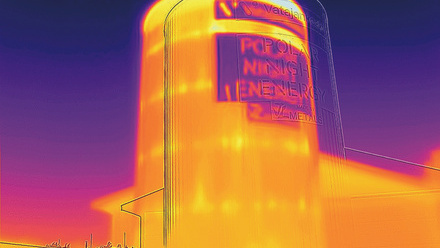Nanophotonic coating enhances camouflage
A visibly transparent, infrared-reflective coating could provide camouflage from thermal imaging cameras.

Previous thermal camouflage work has only focused on cloaking under infrared (IR) cameras, explains Professor Lili Cai at the University of Illinois Urbana-Champaign Engineering. The problem with this, however, is that thermally hidden objects are revealed in visible light, she warns.
'In contrast, our coatings have visible transparency, which can be combined with a daytime camouflage pattern.'
In previously published work in Nature Communications, led by Cai, the team has found nanophotonic structures can be used to design highly IR-reflective films with a nanoporous coating through a process of simulation.
Building on these findings, the team has demonstrated the structure through a series of experiments to find out if the same results can be achieved, even when there is a large-hole size, as this will provide visible transparency.
Cai explains, 'As this gives us the opportunity to independently control the spectral properties in visible and IR ranges, and apply the structure in diverse applications, we tried to further increase the visible transparency while keeping a high IR reflectance.'
The structure is made using a nano-mesh that minimises the amount of periodic metal required while also increasing its visible transparency. The team has chosen gold as the metal due to its versatility, although silver, copper and aluminium are suitable alternatives.
To fabricate the structure, nanosphere lithography and reactive-ion etching are used to form a nanosphere assemble, which acts as a template to deposit the nano-mesh pattern.
One of the main challenges is forming line widths of less than 200nm using conventional lithography techniques, so nanosphere lithography is applied. 'This lithography technique is a solution process,' says Cai. 'It has the advantage of being able to be easily scaled-up.'
Cai adds that, although transparency can be achieved through a single-metal-layer nanophotonic structure, the transparency is still not sufficiently high to apply this structure in diverse fields. As while reducing the amount of metal can increase visible transparency, the structure’s IR reflective properties deteriorate as a result.
'We adopted the tri-layer (oxide-metal-oxide) structure,' she says. 'It can selectively boost visible transparency using light interference [while] the oxide layer has high IR transparency and didn’t hurt the metal layer’s IR reflective properties.'
Tests of the thermal camouflage effect, ranging from 25-34oC, suggest the coating could be used for day and night cloaking.
In terms of other end-uses, the nano-mesh coating is ideal for winter clothing manufactured with thin metallic films outside to block thermal radiation.
'By using our structure, we can block thermal radiation while expressing diverse colours based on a customer’s preference.
'In addition, by combining [our nanopore structure] with a photothermal material, our coating can warm up the human body during outdoor activity using solar energy,' adds Cai. The researchers claim that, even in freezing weather, their coating achieves a 15ºC higher-heating effect than commercial clothing.
The next steps are to enhance the structure’s versatility by developing a method to directly deposit the nano-mesh coating on non-film substrates such as textiles.







